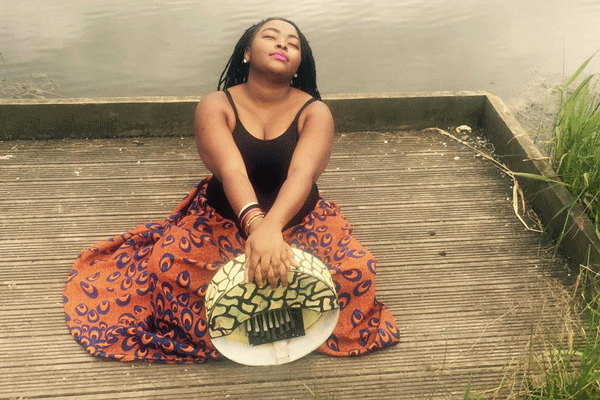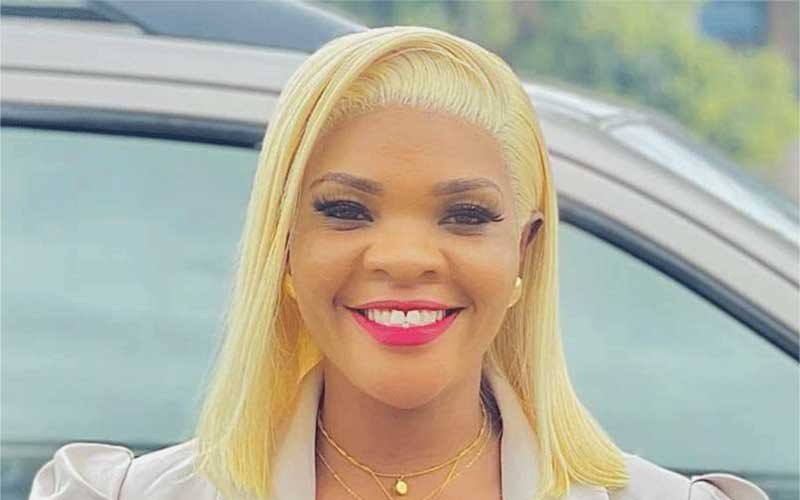
I first came across the name Diana Samkange way back in 2006 when I was serving as a National Arts Merit Awards (Nama) adjudicator. I was given a cassette from the group 2BG to assess for possible nomination in the Urban Grooves category. The group’s name was coined from its composition — “2B” for two boys (Bloodshaw “Blush” Chikosi and Calvin Mavhunga) and “G” for a girl (Diana Samkange).
In the Groove with Fred Zindi
For the last 10 years, I have been wondering what had happened to this group. However, the girl in 2BG, Samkange, who decided to go solo after the group split, did not stop producing music. In 2008 she released the album My First Diary, which did reasonably well on the local market. Two years later, her second album, Kumagumo Erudo, surfaced and her third album titled Kumazivandadzoka was on the market in 2013. After three albums, she embarked on her fourth adventure, this time with a groovy eight-track album titled Kwayedza. I am listening to it right now as I write this article.
It must be pointed out that Samkange has recently gone through an image transformation. We first knew her as an urban grooves artiste, but now she has decided to call herself a traditional and jazz artiste. This has probably been inspired by her new ability to play the mbira. She has also changed her name to “Mangwenya”.
Let me review her fourth album. Some call it Afro-jazz, others call it traditional music. I beg to differ. This is pure jiti. I listened to the whole album and did not get any jazzy feel until I reached the eighth track Ari Mandiri, which I suppose could be categorised as a jazz ditty. However, whatever you decide to call it, this is indeed a very pleasant album.
Whoever said that the Bhundu Boys are dead was talking nonsense. Diana Samkange reincarnates Biggie Tembo and his bandmates in this well executed album. Perhaps this is the reason why she launched the album in the United Kingdom where music punters are already familiar with the Bhundu Boys’ beat.
The initial blast that launches Mangwenya’s sexy, silky and smooth voice is on the title track, Kwayedza. It shows off that Bhundu Boys jit-jive beat when she sings “zvichaenda zvega, zvichabuda zvega” repeatedly. This song serves as a shout that means business for her. The sound is clear. The mix is concise and the keyboardist’s rapid and concise solo puts him in the same league with his Bhundu Boys predecessor. It also sets the bar high for what will come on the second track, Hanga, which begins with mbira, keyboards and guitar smoothly complementing each other. Hanga is a song about wasting time by concentrating one’s efforts on the wrong priorities. Here she sings: “Taipedzera miseve kumakunguwo, hanga dzichiuya”. In Hanga, Mangwenya with her emotional but cool voice demonstrates that she is a force to reckon with.
- Chamisa under fire over US$120K donation
- Mavhunga puts DeMbare into Chibuku quarterfinals
- Pension funds bet on Cabora Bassa oilfields
- Councils defy govt fire tender directive
Keep Reading
She goes into the third song with the instruments, churning out a familiar Tuku-like introduction and here she decides to slow down the beat in Matero. Soon after, she starts to operate within familiar territory when she goes back into a fast tempo, Bhundu Boys style in Mudiwa John where she bemoans the treatment she is getting from her cheating John as she sings “Usandibate kumeso, ndapota mudiwa John.” For anyone in a dancing mood, Mudiwa John is the track to look for. In this tune, Mangwenya also shows great promise as a composer and arranger. It has distinct harmonic colour and an up-tempo rhythm which only those who want to get into a joyous mood can aspire to.
Track five, titled Chokwadi, which teaches us about humility and discipline, is yet another jiti groove. Those who like their music sultry and languid will enjoy this track. There is evidence of a lot of energy exuded by Mangwenya and her band in this tune with the hectic pattering drum patterns and repeating riffs, which are arithmetically ingenious. Altogether they defeat the ear’s attempt to unscramble the well-organised timbre.
Track six is Mationesa. It opens with pronounced keyboards (Have I not heard this before? I can’t be 100% certain.) This has a clear sound, nice keyboard riffs and exhibits professionalism in the music production work that took place. Thanks to producers Oskid and Munya Vialy for the good and timeless quality of the sound.
“Mudzimu Unoyera, ndachema runyararo, ndachema rugare” is what one hears when you play the song, Rugare. It is yet another jit track boasting a guitar solo and a bewitching rhythmic exploration of the drums.
It is, however, the intricacy found in punctuated harmonies and contrapuntal rhythm changes, together with devilish structural shifts that give Mangwenya the image of an Afro-jazz artist as indeed the eighth track has a rather slow, mesmeric funky jazzy feel. The track, Ari Mandiri, allows the bass and drums to develop a swinging jazz theme, which is only interrupted by an exhorbitant guitar work.
This album is a gem. It is indeed an absorbing album. This is the kind of work any radio DJ would be pleased to sample, especially on Sunday programmes like The Comfort Zone on Star FM or the Zee Experience on ZiFM and any time on SFM. Even those on a long drive will find this fantastic album irresistible. It certainly grows on you and once you have caught that bug, you will enjoy playing it again and again, like I do. Looking forward to the next one, Mangwenya.
Feedback: [email protected]












